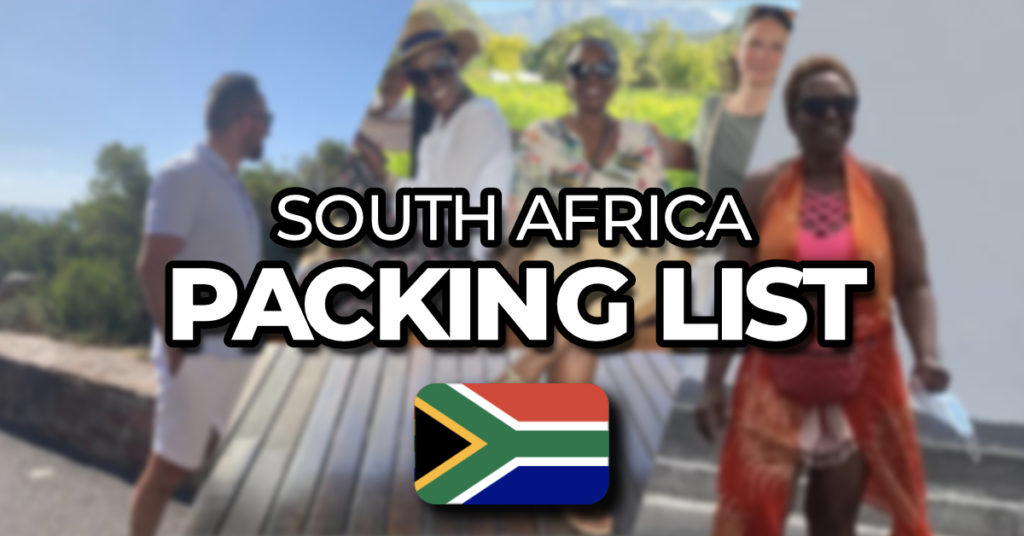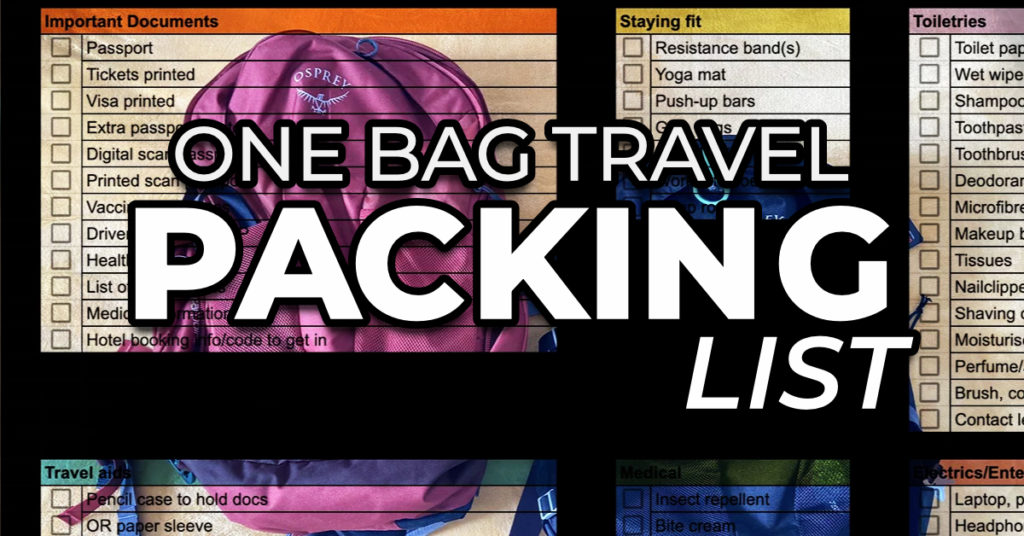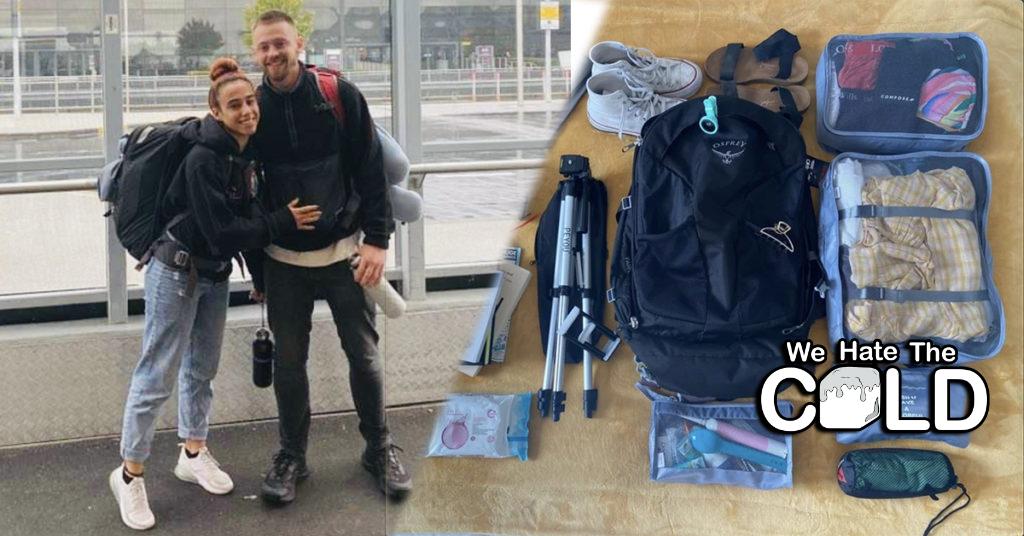Traveling to South Africa (SA) for the first time and not sure how to pack? I got you. You’d be happy to know that SA is a great destination for holidaying and it’s very welcoming to its visitors. The weather is generally agreeable for most part of the year and the people are warm, though overly friendly sometimes I admit, but it’s because we are genuinely excited that you chose us and we are always fascinated by visitors from other countries. I was born in this country, have traveled the length and breadth of it, and have lots of friends from other countries who visit often so I know a thing or two about being a tourist in this country. That’s why I’d like to share some tips about what to pack if you are coming here for the first time, and what to not bother with.
Quick South Africa Packing List for 2023
The Essential Women’s Packing List for South Africa
- 1 fancy dress
- 2 casual dresses
- Skirt
- 2 blouses
- 2-3 t-shirts
- Kimono
- 2 pairs shorts
- 2 pairs leggings or yoga pants
- 1 khaki pants
- 1 pair denims/jeans
- 3 bras
- 2 sport bras
- 5 panties
- 2-3 pairs socks
- Comfortable walking shoes (sneakers)
- 1 pair sandals or slops
- 1 pair dressy shoes or pumps for evening
- Bathing suit
- Scarf
- Wrap (can double up as sarong)
- Warm jacket
- Light sweater for layering
- Light windproof jacket or hoodie
- Sunglasses
- Crossbody bag
- Compression flight socks
- 1 cap or sunhat
- 1 beanie
- Nightwear (can use shorts and t-shirt)
The Essential Men’s Clothes Packing List for South Africa
- Khaki pants
- 1 pair jeans
- 3 pairs of shorts
- 2-3 short sleeved shirts/polo
- 1 long-sleeved shirt
- 3 t-shirts
- Walking shoes
- 1 pair of sneakers
- Slops
- Dress shoes
- 5-7 underwear and socks
- Belt
- Warm jacket
- Light jacket or hoodie
- Rain jacket
- 2 pairs gym shorts
- 2 swim trunks
- Sunglasses
- Compression flight socks
- Fanny pack or cross body bag
Important Documents
- Passport
- Printed copies of passport
- Extra passport photos
- Visa
- International drivers’ license
- Boarding passes (digital)
- Vaccination certificates – yellow fever if traveling from another country that’s at risk
- Printed hotel information
- Downloaded map
- Medical information
- Travel insurance
Toiletries
- Body lotion
- Antiperspirant
- Deodorant
- Shampoo
- Conditioner
- Toothbrush
- Floss
- Toothpaste
- Toiletry bag with hook for hanging
- Face wash
- Moisturizer
- Microfibre towel (travel towel)
- Toner (as needed)
- Shaving razors
- Shaving cream
- Hairbrush
- Cotton buds
- Sanitary pads/tampons/menstrual cup
Medical
- Insect repellant
- Sunscreen lotion
- After sun
- Chapstick
- Deep heat
- Tiger balm/bite cream
- Band-aids
- Paracetamol
- Anti-histamine
- Throat sweets
- Vitamins
- Your medications
- Painkillers
- Anti-septic
- Diarrhea medication
- Masks
- Glasses or contact lenses (as needed)
- Contact lens solution (as needed)
Travel Aids
- Backpack
- Foldable tote bag for day trips and souvenirs
- Binoculars
- Combination lock
- Head/earphones
- Earplugs
- Travel pillow
- Re-usable water bottle
- Wet wipes
- Hand sanitizer
Electrics/Entertainment
- SA travel adapter plug
- Battery pack for phone
- Laptop, phone, tablets
- Headphones
- Headphone splitter
- Charging cables
- USB plugs
- Travel multi plug
- 25000mAH power pack
- Camera, memory card, charger
- Flashlight
- Batteries
- USB/External drives
- Phone/tablet holder
- Books
Finances
- Local currency (ZAR)
- Foreign currency (USD preferred)
- Emergency money
- VISA or Mastercard credit and debit cards
- Revolut card (no ATM withdrawal fee)
Staying Fit
- Yoga mat
- Resistance bands
- Skipping rope
- TRX system OR gym rings
Misc
- Nail scissors/file
- Tweezers
- Hair bands
- Sleeping bag (if going camping)
Packing for Winter in South Africa (& Summer)
Here’s a quick overview of how to pack for all seasons & parts of South Africa:
- North – expect -2°C (winter), so pack thick jackets, beanies, and scarves. In summer expect up to 40°C so pack, shorts, and T-shirts
- East – 10°C (winter) to 34°C (summer); imagine mild winters, so pack a jersey and long pants for winter, and shorts & T-shirts or dresses in summer.
- South – 4°C (winter) to 38°C (summer) so layering with sweaters and jackets/hoodies in winter and shorts, shirts etc. in summer.
- West – 5°C (winter) to 40°C (summer), so layered clothing in winter, beanies and scarves, and shorts and T-shirts in summer.
With the climate shifts in South Africa, the winters are getting colder every year and the summers are getting extremely hot.
Packing for the North
Here is how you should pack for the northern parts of the country in all seasons:
Summer
Summers can be very dry and hot in the Northern parts of South Africa, so pack short-sleeved shirts, lightweight t-shirts, shorts, summer dresses, sandals or slops, sneakers, swimwear, sun hat or cap, and sunglasses. Long pants are perfectly fine if they are made of cool, breathable fabric and are good to protect against bugs and sunburn when visiting safaris.
Winter
For winters in Northern South Africa Pack long-sleeved pants, long-sleeved shirts, sweaters, hoodies, warm jackets, socks, closed shoes or sneakers, t-shirts for layering, a beanie, a scarf, and gloves are optional because the winters are not that harsh, although it can get very cold.
Packing for the East
Summer
The east coast lies along the Indian Ocean, and the eastern parts of South Africa can be very humid and get a lot of rain in the summer so pack a raincoat, short-sleeved shirts/blouses, t-shirts, shorts, summer dresses, bathing suit or swim trunks, sun hat or cap, open-toe shoes and/or sneakers and sunglasses. For rainy days you may be able to purchase a plastic poncho from travel or tourist/curio shops but they are not commonly available in convenience shops.
Winter
The East is known for very mild winters in South Africa and though you may need a jacket you can get by with a light jacket, light sweater, long dress, long pants, yoga pants, t-shirts, closed shoes or sneakers, and a hoodie. You may need a beanie in the evenings but it’s not necessary.
Packing for the West
Summer
The west has Mediterranean weather and so it is known for its beautiful and long summer days though it can get extremely hot in the Winelands, up to 40 degrees Celsius, so pack very light clothing; shorts, t-shirts, summer dresses, sandals or slops, sneakers, sun hat or cap, sunglasses.
Winter
Unlike the rest of the country, due to its Mediterranean weather, the west gets winter rains from around August to October in South Africa, so pack a raincoat, long pants, long-sleeved tops, warm jacket, hoodie, sweater for layering, gloves (optional), closed shoes or sneakers, scarf and beanie.
Packing for the South
In you will hardly hear people referring to the south as the “south” but geographically it includes the Karoo and what we call the Garden Route, a stretch of the coast that connects the southern parts of the Western Cape with the Eastern Cape. Here you will find sub-tropical weather.
Summer
The Garden Route has beautiful weather for the most part of the year and it hosts many cultural and fun activities including bungee jumping and many beautiful beaches in, so pack light clothing; t-shirts and shorts, summer dresses, light blouses and skirts, swimwear, walking shoes and sandals, sun hat or cap and sunglasses. You will need a raincoat for rainy days too.
Winter
Pack long pants, long-sleeved shirts or tops, a hoodie, a warm jacket, closed shoes or sneakers, warm socks, a scarf, a beanie, and a sweater for layering.
Clothing Etiquette for South Africa | What To Wear in South Africa
South Africa is a very casual country and takes most of its traditions from Western culture although there are still a few traditions that you must observe as a visitor.
Women dress
Women can pretty much wear whatever they like especially in major cities where the dress code is informal so on a hot day you will see women in short summer dresses, or a pair of shorts and a blouse or T-shirt, a pair of sandals or slops, a sun hat and sunglasses. You would wear the same if you were going out with friends, to the markets, or visiting the Winelands for the day.
Men can get away with pretty much anything, so we haven’t chosen to specifically include a section here.
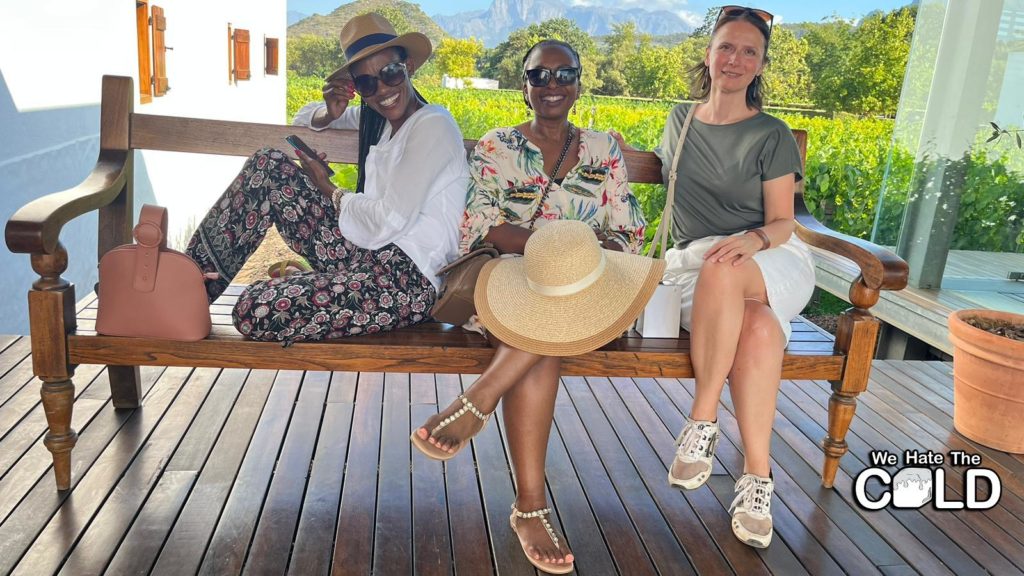

At the Beach
Everyone wears swimsuits or bikinis and it depends on what you are comfortable with. Some women will have on a sarong on top of the bikini but again this is just a matter of being comfortable with one’s body. Nobody expects women to cover up.
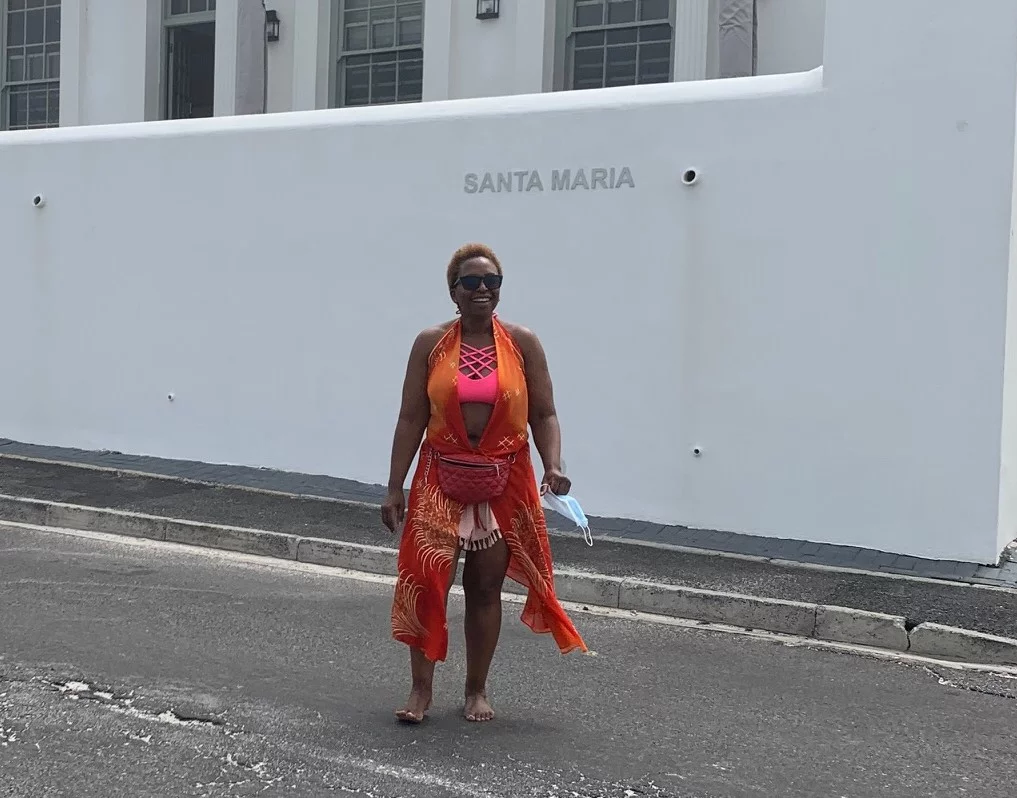
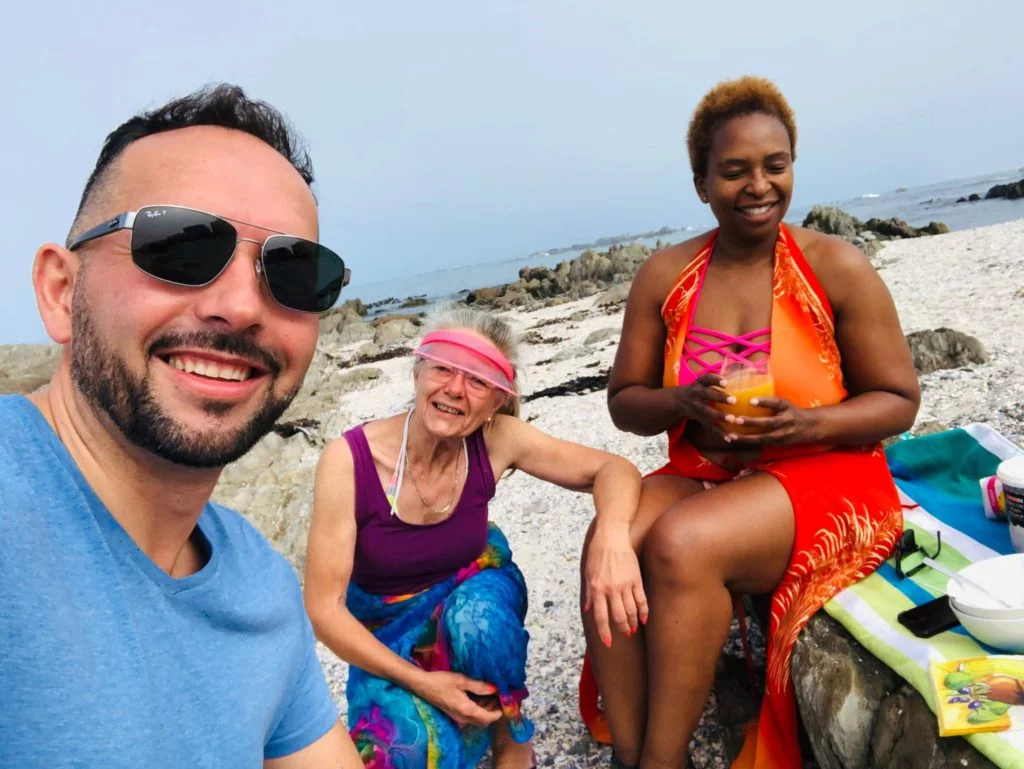
Restaurants
This depends on the type of restaurant you are going to. Most restaurants are very casual, so a dress and open-toe or closed shoes are pretty much standard. So are jeans and T-shirts or a blouse. Of course, if you are going to a really fancy restaurant you would want to dress up for it, in a smart dress and a bit of heel, wedge or even pumps are acceptable. Ask yourself “how would I dress to go to a fancy restaurant back home?” and use that as your guide.

Places of Worship
If you get invited to a church you could wear exactly the same outfit you would wear if you were going for a day out with friends but keep it respectful, in other words, no bum shorts or ripped jeans, would be my recommendation. Those would definitely draw uncomfortable stares. What I have described is fine in the big cities but when you go into the rural areas, and SA is full of them, just know that people still live very conservative lives there and dress in a respectful manner. If you have to go to church in a rural area, or even in what we call ‘townships’, it would be good to dress up, as dressing up is a sign of respect and reverence for the place of worship. The same can be said for visiting a temple or a similar place of worship – like in other countries where women have to cover up if visiting a temple, the same would be expected here.
Cultural Customs
Visiting the Rural Areas
Women in rural areas are still expected to wear less revealing clothes, so, if you visit these areas, you will see women wearing longer skirts or dresses and wearing what we call a “doek”, which is a headwrap. This is more the case with married women and the older generation. As a visitor, you are not expected to dress like that but as a sign of respect, it would be best to wear clothing that isn’t too revealing. An example could be just a summer dress with a sweater or a wrap on your shoulders and whatever shoes you are comfortable in.
For men, anything goes really though I would advise you not to wear shorts and slops if visiting the chief’s homestead.
Currency
The SA currency is the Rand (ZAR) and at the point of writing this the exchange rate was 1USD/19 ZAR. Unlike other African states, the USD is not accepted in restaurants so I would advise that you withdraw local currency when you land, mostly for tipping and buying from informal traders. South African establishments accept all major credit and debit cards like VISA and Mastercard so you can pay for your meals in restaurants, accommodation in all types of lodgings, and all through the airports with card.
I would advise that you check before you leave your country what the charges are, if any, on your card for transactions and withdrawals in SA so as to avoid exorbitant charges. As a South African, when I travel to other countries I always get a travel card from my local bank that you load with foreign currency before I leave SA. The beauty of this is that its fees don’t fluctuate with the exchange rate while I’m overseas because I would have already bought the currency at a fixed fee before I left my country. Your country will have something like this. I believe this is similar to the Wise, Revolut, and Starling cards.
The maximum amount of cash you can bring into this country is 25,000 ZAR or 10,000 USD.
Money Exchange
You can exchange your currency at the airports, or South African banks, or you can just use your card to withdraw from the local ATMs. ATMs are found in all shopping centers, airports, and garages (petrol stations) and honestly, this usually works out cheaper than using a Bureau de Change. Unlike some African states that I have visited in the past, do not be persuaded to exchange money on the streets, this is not a thing in South Africa and if anyone ever suggested it, run.
To Suitcase or To Backpack in SA? That is The Question
This will depend on the type of visit. Is it a luxury holiday where you will be staying in hotels, with a hired car to do day drives to the Winelands and safari visits or are you backpacking across the country? Both backpack and suitcase work very well in SA. Backpacks allow you to free your hands and the multiple outside pockets are great for your sunglasses, wet wipes, and phone chargers to be within easy reach but if you prefer a suitcase so your clothes won’t wrinkle too much, then the suitcase is your best option. You may still want to have a small backpack for day trips or a tote bag.
Packing Tips To Optimise for Space & Weight | How To Fit More in Your Bag (The Tardis Effect)
As someone who uses her backpack a lot, I like to roll up my clothes like you would roll a yoga mat because I can fit more than you would if they were folded flat. I started doing this as a backpacking thing but now I do it even when I’m using a suitcase. I know some people use vacuum packing and packing cubes but this has always worked well for me.
The South African airline restrictions are 23kg (50 lb) for checked luggage for economy class and 7kg (18 lb) for carry-on luggage. For those who are traveling business or first class that would be 32kg (70 lb) for each checked luggage and you are allowed up to 2 pieces. On economy, you are only allowed 1 piece of checked luggage free.
What to pack for activities? | Safari in South Africa, Hiking, etc.
Most people come to SA to go on safari so here are my suggestions for going on safari or hiking.
Binoculars are essential. So is a sun hat and sunglasses as you will spend the day out in the bush under the harsh African sky. Most people believe that you should wear khakis and neutrals when you go on safari so you can blend in with nature but this is not required unless you are going to be out of the vehicle, walking. In that case, you might want to blend in. I have gone on many safaris and never needed to or felt out of place. I wouldn’t wouldn’t waste money unless you really wanted to.
It’s the same with going on a boat, most people think you should wear white, but do you really have to?
On the other hand, if you will be hiking up Table Mountain I highly recommend hiking boots, or a good pair of running shoes, activewear or shorts, and a T-shirt, as well as a cap because the sun is a scorcher.
FAQ – Your Important Questions Answered
What should I pack for South Africa in September?
Winters can be very harsh or mild in South Africa. Generally, they last from June – October, so if you are coming in September I advise you to pack rain jackets, fleeces, a warm hat, and clothes to layer. Make sure to take warm layers that are lighter so you can take them off during the day as it warms up.
What should I pack for 2 weeks in South Africa?
It depends where you are going in South Africa, and when. Summers are hot (34°C – 40°C). Winters can be harsh (-2°C to 10°C). You want to pack according to the time you are going. If in summer, pack shorts, t-shirts, lightweight loose-fitting pants, sun hats, etc. If you are going in winter, pack light, but warm fleeces, tops that can be layered, jeans, etc.
This will also vary if you are going North, East, South, or West, so check the climate beforehand. In this article I’ve written the average temperatures of South Africa in all seasons and how you should pack for those.
What should I pack for Safari in South Africa?
Binoculars are essential. So is a sun hat and sunglasses as you will spend the day out in the bush under the harsh African sky. Most people believe you should wear khakis and neutrals when you go on safari to blend in with nature, but this is not required unless you are going to be out of the vehicle, walking. If you are outside of a vehicle, you might want to blend in. I have gone on many safaris and never needed to or felt out of place. I wouldn’t wouldn’t waste money unless you really wanted to.
What should I wear on Safari in South Africa?
Avoid black and blue clothing, as well as jeans for Safari, you can attract Tsetse flies with these colors which will bite. If you are going around in a vehicle it’s not necessary to wear clothes that blend in, but if you are going to be walking around outside a car, khakis and neutrals are a good option.
Is it safe to travel to South Africa?
South Africa is as safe as most countries in the West are. The crime rate is higher in the big cities of course and here you have to watch out for pickpocketers, which is why it’s best to carry a crossbody bag for day trips. When walking downtown keep your valuables safely tucked away at all times. In the main cities especially, there are instances of car hijackings and I would advise that you don’t stop for random hitchhikers if you are driving and that you are extremely vigilant when you approach the traffic lights and intersections as thieves can break your window and steal any valuables within reach. If you plan to visit areas outside the city like the townships, it’s best to hire a driver/guide or go with a local friend than to venture out on your own.
For the most part, if you stay aware and don’t go to dodgy places, you will be safe in South Africa. However, it’s important to note the crime rate is quite high.
Should I take malaria pills for Kruger National Park?
Yes. It’s advisable to take malaria pills for Kruger National Park. There is a high risk of contracting malaria here due to the wildlife. Take repellent sprays and wear long clothes that cover your arms.
Do I need to take malaria tablets to South Africa?
If you are going to rural and high-risk areas, yes you need to take malaria tablets. However, when traveling to urban cities such as Cape Town, malaria tablets are not needed as the risk of malaria contraction here is minimal.
Is South African water safe to drink?
Yes for most parts of the country, the water is perfectly safe to drink. However, in more rural areas, it’s advisable to drink bottled water. If you are staying in urban areas such as Cape Town, Johannesburg and other cities/towns, the water will be safe to drink.
How do you get a SIM card in South Africa?
When you arrive at the airport go to one of the cellphone vendors and ask them to give you a comparison of the rates from all three major network providers, Vodacom, MTN and Cell C and then you can choose the best one for you. You can by a small airtime and data package. You will need airtime to call restaurants for reservations and data for Uber, etc. Wi-fi is also commonly available at hotels, restaurants and shopping areas in the urban areas.
What is the power voltage for outlets in South Africa?
The voltage is 220/230 volts AC 50 HZ. South Africa has been experiencing what is called “load shedding” which is scheduled power cuts that happen on a rolling basis. Check the schedule for your lodgings as soon as you check-in. Some big establishments do not go through load shedding but smaller ones are usually affected. Thus the need for an extra battery for charging your phone when this happens. You can also download an app on your phone that gives you the schedule for the area that you’re staying in. Ask the hotel staff to recommend an app.
What is the tipping culture in South Africa?
Tips are part of the culture here. The standard is between 10% – 15%, but please feel free to go above and beyond if your budget permits and/or if you are truly impressed with the service. Just check that the tip isn’t already included in your bill. Also, most waiters prefer to be tipped in cash.
What is the legal speed limit when driving in South Africa?
The speed limit on the main highways is 120km/h, 100km/h on the secondary roads, and 60km/h on suburban roads. Uber and Bolt are available in the main cities, as well as buses and taxis. Planes connect the different cities and long-haul buses like the Greyhound.

Thola is a research psychologist who left the field in 2019 and has been writing professionally for various magazines including her own blog ZuluSingleandFab since then. She also writes as a ghostwriter for various clients and has published 5 books to date. Her love of writing started during the COVID-19 lockdowns when she created her website to share her travel stories and her health and fitness journey. A gym enthusiast and lover of healthy food, she published a book, “Fit and Fabolous at Fifty” on Amazon Kindle in 2020 and is currently in the process of writing her second book about her life experiences from leaving a powerful corporate job to working as a freelance writer.
